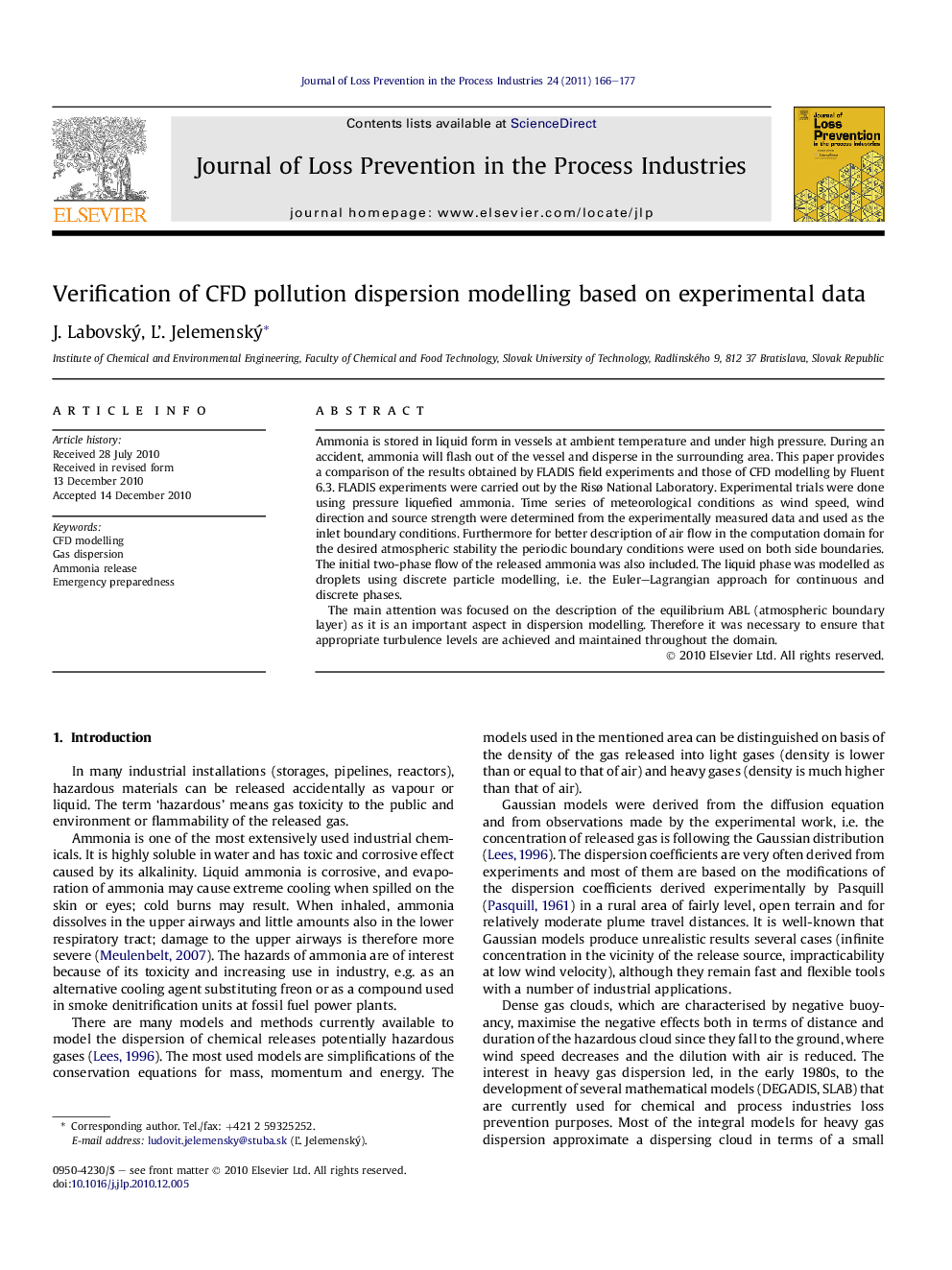| Article ID | Journal | Published Year | Pages | File Type |
|---|---|---|---|---|
| 586440 | Journal of Loss Prevention in the Process Industries | 2011 | 12 Pages |
Ammonia is stored in liquid form in vessels at ambient temperature and under high pressure. During an accident, ammonia will flash out of the vessel and disperse in the surrounding area. This paper provides a comparison of the results obtained by FLADIS field experiments and those of CFD modelling by Fluent 6.3. FLADIS experiments were carried out by the Risø National Laboratory. Experimental trials were done using pressure liquefied ammonia. Time series of meteorological conditions as wind speed, wind direction and source strength were determined from the experimentally measured data and used as the inlet boundary conditions. Furthermore for better description of air flow in the computation domain for the desired atmospheric stability the periodic boundary conditions were used on both side boundaries. The initial two-phase flow of the released ammonia was also included. The liquid phase was modelled as droplets using discrete particle modelling, i.e. the Euler–Lagrangian approach for continuous and discrete phases.The main attention was focused on the description of the equilibrium ABL (atmospheric boundary layer) as it is an important aspect in dispersion modelling. Therefore it was necessary to ensure that appropriate turbulence levels are achieved and maintained throughout the domain.
Research highlights► Comparison of the results obtained by FLADIS experiments and by CFD approach was performed. ► For better description of air flow the periodic boundary conditions were used. ► The main attention was focused on the description of the equilibrium ABL. ► The time series of meteorological conditions allows to simulate in the pseudo transient mode. ► The two-phase flow release by the equilibrium thermodynamic simplification was described.
